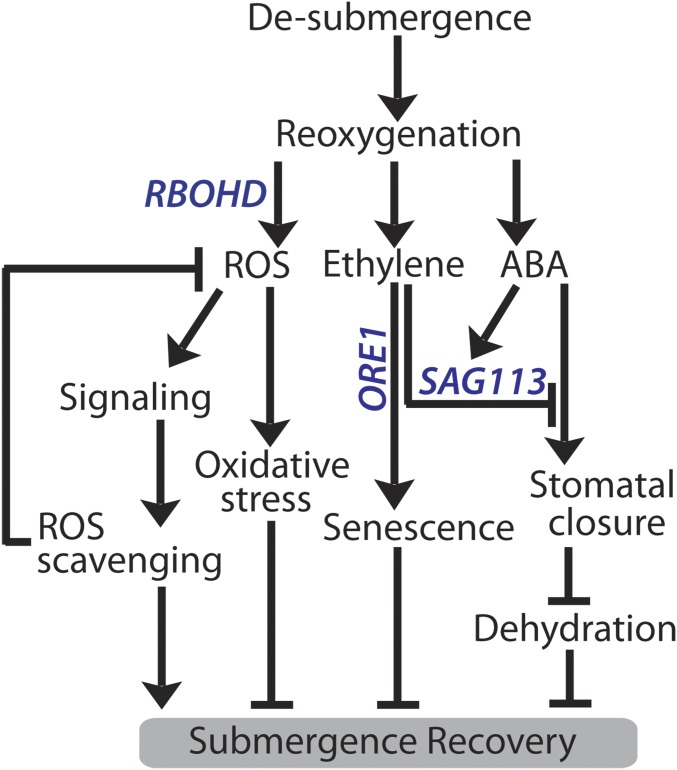Fig. 8.
Signaling network mediating postsubmergence recovery. Following prolonged submergence, the shift to a normoxic environment generates the postsubmergence signals ROS, ethylene, and ABA. A ROS burst upon reoxygenation occurs due to reduced scavenging and increased production in Bay-0 from several sources, including RBOHD activity. While excessive ROS accumulation is detrimental and can cause cellular damage, ROS-mediated signaling is required to trigger downstream processes that benefit recovery, including enhanced antioxidant capacity for ROS homeostasis. Signals triggering RBOHD induction following desubmergence are unclear, but hormonal control is most likely involved. Recovering plants experience physiological drought due to reduced root conductance, resulting in increased ABA levels postsubmergence which can regulate stomatal movements to offset excessive water loss. High ethylene production in Bay-0 caused by ACC oxidation upon reaeration can counter drought-induced stomatal closure via induction of the protein phosphatase 2C SAG113, accelerating water loss and senescence. Higher transcript abundance of SAG113 in Bay-0 is also positively regulated by ABA, and could be a means to speed up water loss and senescence in older leaves. Ethylene also accelerates chlorophyll breakdown via the NAC transcription factor ORE1. The timing of stomatal reopening during recovery is critical for balancing water loss with CO2 assimilation, and is likely regulated by postsubmergence ethylene–ABA dynamics and signaling interactions.

